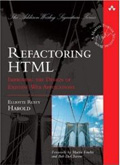October 27th, 2006
The POST method is vastly overused in HTML forms, with negative consequences for the user experience. POST requests cannot be bookmarked, linked to, indexed, searched, or cached. For example, recently I wanted to link to a list of top independent albums from RIAA Radar. However I couldn’t becuase the search request was sent via POST. The URL was http://www.riaaradar.com/search.asp, but there was nothing in the URL to indicate whether I was searching for Black Box Recorder or Britney Spears.
All safe requests should be done with GET. GET is vastly friendlier to users and dramatically improves your search engine placement. (In fact, form results sent with POST might as well be invisible to search engines.) POST should only be used for requests that cause some action to be taken: a book to be ordered, a page to be printed, a contract to be signed, etc. Search results and many other things don’t fall into this category.
Read the rest of this entry »
Posted in Web Development | 20 Comments »
October 26th, 2006
Representational State Transfer (REST) is the explicit architecture of HTTP and the World Wide Web. It is a well-designed, well thought out system that enables scalable applications that service millions of users. It is also a simpler system that enables developers who understand it to bring applications to market faster that perform better. Well, actually, no, it’s not. And therein lies a story.
Read the rest of this entry »
Posted in Web Development | 42 Comments »
October 24th, 2006
Everyone’s so excited about Web 2.0 and AJAX. OK, Google maps is cool; but personally I’m still finding lots of exciting things that can be done solely within the space of classic HTML and basic forms. Most of the interesting services are those that don’t depend on fancy UIs, but instead find new and interesting ways to present information or services. For example,
Read the rest of this entry »
Posted in Web Development | 7 Comments »
October 21st, 2006
When you follow a link from one page or site to another, the browser usually sends a Referer [sic] header to the server to tell sites where you came from:
GET /test.phtml HTTP/1.1
Host: cafe.elharo.com
User-Agent: Mozilla/5.0 (Macintosh; U; PPC Mac OS X Mach-O; en-US; rv:1.8) Gecko/20051130 Firefox/1.5
Referer: http://blog.elharo.com/blog/
Accept: text/xml,application/xml,application/xhtml+xml,text/html;q=0.9,text/plain;q=0.8,image/png,*/*;q=0.5
Accept-Language: en-us,en;q=0.5
Accept-Encoding: gzip,deflate
Accept-Charset: ISO-8859-1,utf-8;q=0.7,*;q=0.7
Keep-Alive: 300
Connection: keep-alive
In general this is a good thing. However, unscrupulous sites can and do abuse this information to violate visitors’ privacy and track them across the Web. In combination with cookies, it’s especially dangerous. In Firefox, you can disable the sending of the Referer header completely, and in general I recommend you do so. Here are the steps:
Read the rest of this entry »
Posted in Privacy | 32 Comments »
October 20th, 2006
I’ve been writing my talk notes in XML and delivering them in HTML for years. These days I rarely if ever use PowerPoint. Especially since my talks tend to be quite code heavy, HTML works much better. It’s much easier to put a decent amount of (still legible) source code on an HTML page than a PowerPoint slide, plus I can scroll if I need to.
One of the most common questions I get when I give one of these talks is how I make the slide advance from one to the next by just hitting one key. It’s actually not that hard, but it does surprise people, so I thought I’d show you.
Read the rest of this entry »
Posted in Web Development, XML | 7 Comments »
